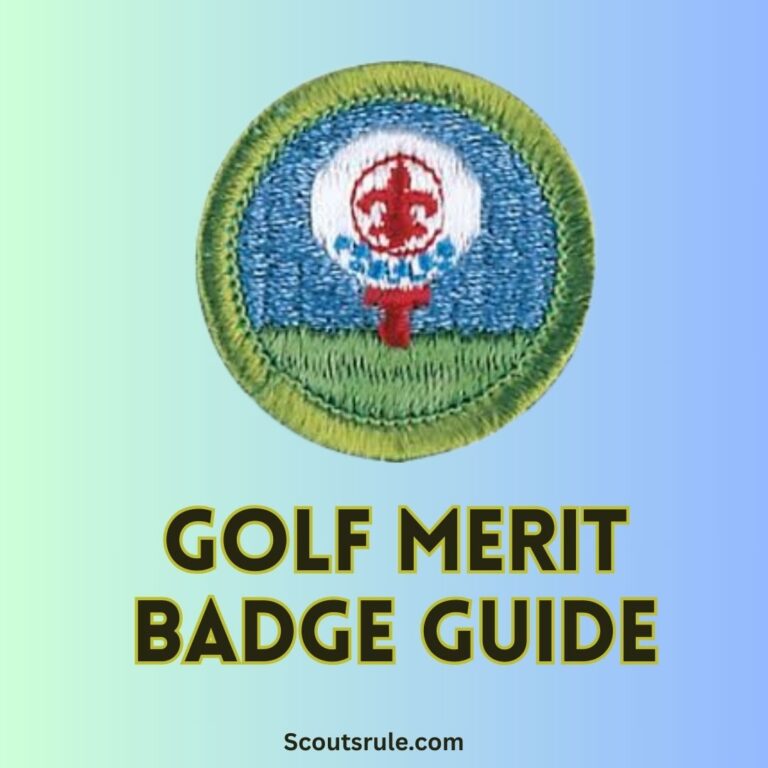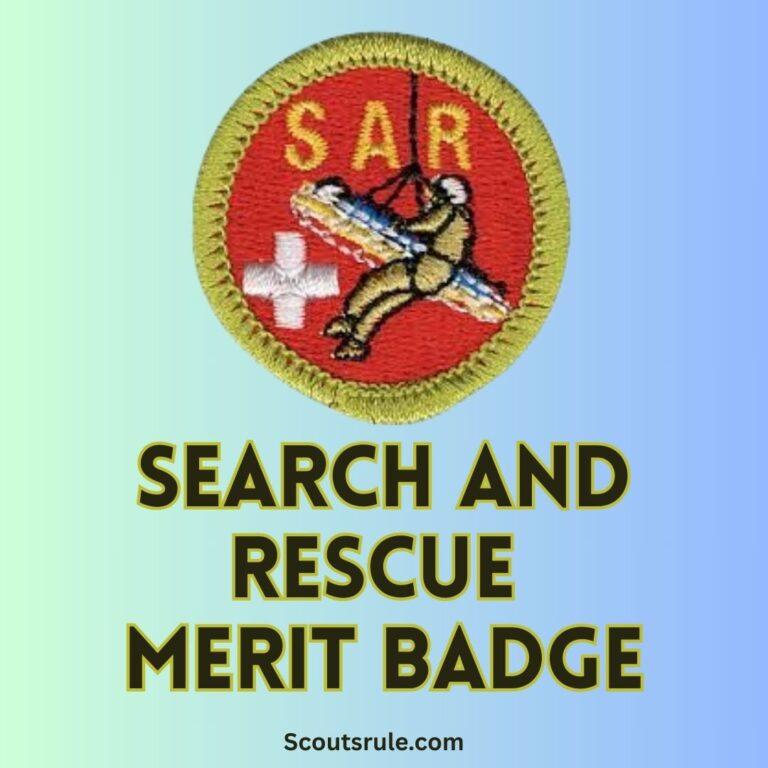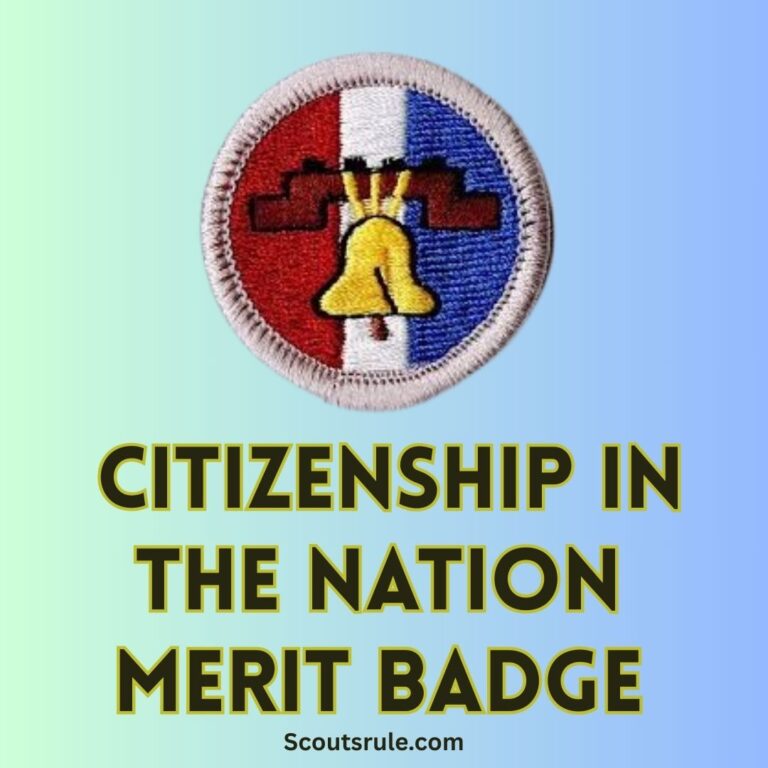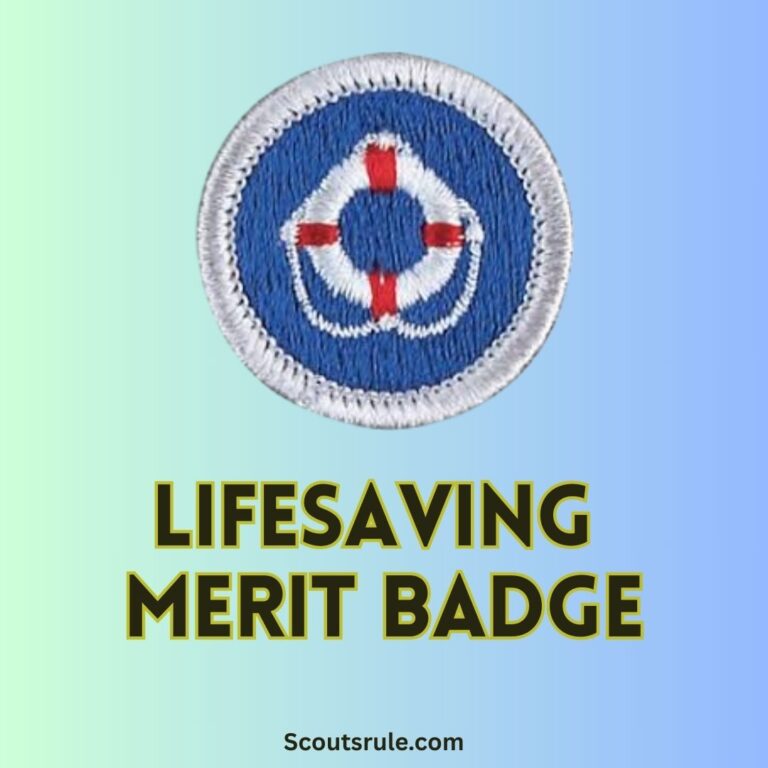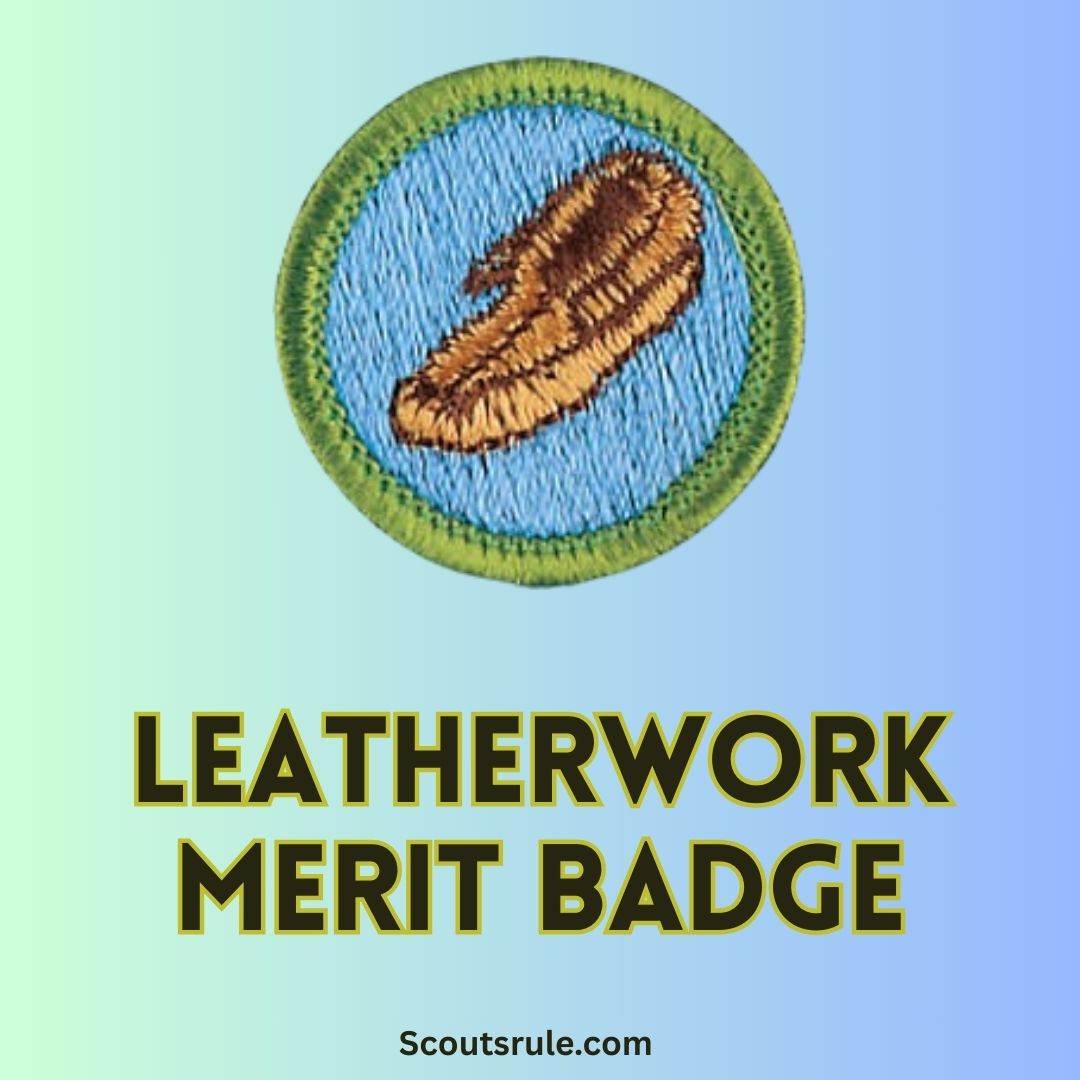
This guide is intended to help you learn about the art and science of leatherworking by providing an overview of the badge’s objectives, safety requirements, necessary tools and techniques, project ideas, and documentation suggestions. Please note that this guide is not meant to be a substitute for the official Boy Scouts of America merit badge pamphlet; it is an educational resource designed to enhance your understanding of leatherwork while you work on the badge. Always consult your merit badge counselor and the current official guidelines when completing your project.
Post Contents
- Introduction: The World of Leatherwork
- 2. Purpose and Objectives of the Leatherwork Merit Badge
- 3. Understanding Leather: Materials and Terminology
- 4. Safety in Leatherwork
- 5. Metalworking Techniques (Leatherwork Techniques)
- 6. Practical Projects and Hands-On Activities
- 7. Career Opportunities and Industry Insights
- 8. Documentation, Record-Keeping, and Presentation Strategies
- 9. Additional Tips, Resources, and Further Exploration
- Conclusion: The Lasting Impact of Leatherwork
Introduction: The World of Leatherwork
Leatherwork is an ancient craft that transforms animal hides into durable, beautiful objects. From functional items such as belts, wallets, and footwear to artistic creations and custom accessories, leatherwork combines creative expression with practical skills. In Scouting, the Leatherwork Merit Badge encourages you to learn about the properties and processing of leather, master fundamental techniques, and create your own leather articles. This badge is not only a way to develop technical skills but also a means to appreciate the craftsmanship and history behind an art that has been practiced for centuries.
2. Purpose and Objectives of the Leatherwork Merit Badge
The objectives of the Leatherwork Merit Badge are designed to provide you with a well-rounded introduction to the craft:
- Educational Growth: Understand the materials, terminology, and historical context of leatherwork. Learn where leather comes from, what kinds of hides are used, and the best uses for each type of leather.
- Skill Development: Acquire practical skills such as pattern layout, cutting, punching, stamping, dyeing, assembly, and finishing techniques. Learn both traditional methods and modern approaches.
- Safety and Responsibility: Develop a strong awareness of the hazards associated with leatherworking, such as cuts, chemical exposures, and handling hot materials. Learn the appropriate first-aid procedures.
- Creativity and Craftsmanship: Apply your creative skills to design and produce one or more leather articles, integrating multiple techniques such as carving or stamping and lacing or stitching.
- Optional Exploration: Choose to delve deeper into advanced topics like commercial tanning, leather reconditioning, or visiting a leather-related business. Compare the advantages and disadvantages of leather versus synthetic materials.
- Documentation and Reflection: Maintain thorough records of your projects—including sketches, photos, and written reflections—to document your process, challenges, and successes.
Completing the badge will not only enable you to produce functional and decorative leather items but also impart lifelong skills and an appreciation for traditional craftsmanship.
3. Understanding Leather: Materials and Terminology
3.1 What Is Leather and Where Does It Come From?
Leather is made from animal hides, which are processed and tanned to become a durable, flexible material. Traditionally, leather is produced from hides of cattle, although it may also come from pigs, goats, sheep, and even exotic animals. The process transforms raw hide into a finished product by removing hair, preserving the material, and enhancing its aesthetic and physical properties.
Understanding the origin of leather lays the foundation for its many uses. Consider the historical significance of leather in clothing, shelter, and tools—and how these uses have evolved with modern techniques in tanning and finishing.
3.2 Kinds of Hides and Types of Leather
- Kinds of Hides: Hides vary based on the animal species and the quality of the raw material. A hide’s thickness, texture, and grain determine its suitability for different products.
- Types of Leather: The merit badge typically requires you to discuss at least five types of leather. Examples might include:
- Full-Grain Leather: The highest quality, used for products requiring durability, such as saddles and premium wallets.
- Top-Grain Leather: Slightly lower in quality than full-grain but still very durable. Commonly used for upholstery, bags, and garments.
- Genuine Leather: Made from lower layers of the hide, often used in inexpensive footwear or accessories.
- Patent Leather: Coated with a high-gloss finish for a distinctive, shiny appearance.
- Suede: Created from the underside of a hide, offering a soft, napped finish but less durable than full-grain leather.
Discuss the best uses for each type, considering factors such as durability, aesthetic appeal, and cost. Including specific examples illustrates your understanding of these materials.
4. Safety in Leatherwork
Working with leather and leatherworking tools requires strict adherence to safety protocols to prevent injuries and exposure to hazardous materials.
4.1 Safety Rules and Precautions
- Hazard Awareness: Understand that tools such as knives, scissors, and rotary cutters can cause lacerations. Chemicals used in dyeing, cements, and finishes may pose health risks if not handled properly.
- Preventive Measures: Always use tools as recommended. Keep work areas clean and well-lit, and ensure you have a clear, organized workspace.
- Supervision: Work under the guidance of experienced instructors or mentors, especially when using power tools or chemical agents.
4.2 Protective Equipment and Best Practices
- Personal Protective Equipment (PPE): Wear safety glasses or goggles when cutting or working with leather to protect your eyes from flying scraps. Gloves can help prevent cuts and minimize chemical exposure.
- Ventilation: Ensure that your workspace is well-ventilated when using dyes and finishes. If indoors, open windows or work near an exhaust fan.
- First-Aid: Familiarize yourself with basic first-aid procedures for minor cuts, chemical splashes, or skin irritation. Keep a first-aid kit readily available.
Your documentation should explain the safety rules you follow and may include photographs of your workspace, PPE, and a short explanation of any first-aid procedures you have practiced.
5. Metalworking Techniques (Leatherwork Techniques)
While metalwork and leatherwork are different crafts, the term “technique” here refers to the specialized processes used in leatherwork. The following are key techniques you will need to master:
5.1 Pattern Layout and Transfer
- Design Creation: Begin by drawing a pattern for your project on paper. The pattern serves as a blueprint for your work.
- Transferring the Pattern: Use tools such as tracing paper, carbon paper, or a light box to transfer your pattern onto the leather accurately. This step is crucial for ensuring that your cuts are precise.
5.2 Cutting Leather
- Tools Needed: Use a sharp utility knife or leather shears. A cutting mat is recommended to protect your work surface.
- Techniques: Follow your pattern carefully, keeping the knife steady. Practice smooth, continuous cuts to avoid jagged edges.
- Tips: Always cut away from your body, and consider making a trial cut with a scrap piece of leather to check your technique.
5.3 Punching Holes
- Purpose: Punching holes allows you to engage in lacing, stitching, or setting snaps and rivets.
- Tools: Use a leather punch (manual or pneumatic) that is appropriate for the thickness of your leather.
- Safe Techniques: Secure the leather on a firm surface before punching to ensure consistency and prevent accidents.
5.4 Carving or Stamping Surface Designs
- Creative Expression: Use leather stamps or carving tools to imprint designs, patterns, or even symbolic motifs directly onto your leather.
- Practice: Experiment on a scrap piece first to become comfortable with the pressure and angle required.
- Consistency: Work slowly to maintain a uniform design throughout your project.
5.5 Applying Dye or Stain and Finish
- Color Application: Leather can be dyed or stained to achieve the desired appearance. Use brushes, sponges, or spray tools for an even application.
- Finishing Touches: After dyeing, apply a leather finish or sealant. The finish adds sheen, protects the dye, and enhances the leather’s durability.
- Curing Time: Allow proper drying and curing time to ensure the finish sets well.
5.6 Assembly: Lacing, Stitching, and Setting Fasteners
- Preparation: Depending on the project, you may need to assemble multiple pieces of leather. Preparing the edges (by burning or sanding) ensures a neat finish.
- Techniques:
- Lacing: Use leather laces to tie pieces together. Ensure the lacing is secure and uniform.
- Stitching: Hand stitching with waxed thread can provide durability and aesthetic appeal. Practice using a leather needle and create even, tight stitches.
- Fasteners: Setting snaps, rivets, or buckles can add both functionality and design elements to your project.
- Practice: Experiment with different techniques on scraps before applying them to the final project.
6. Practical Projects and Hands-On Activities
A core part of the merit badge involves creating one or more articles of leather using at least five distinct steps from the list provided (e.g., pattern transfer, cutting, punching, stamping, dyeing, assembly).
6.1 Project 1: A Multi-Step Leather Article
Objective: Create a functional item (such as a wallet, belt, or pouch) incorporating multiple techniques.
Steps to Consider:
- Pattern Layout: Design your item on paper.
- Transfer: Carefully trace the pattern onto a piece of leather.
- Cut: Use a sharp knife or leather shears to cut out the shape.
- Punch and Stitch: Punch holes for stitching. Use waxed thread to sew components together.
- Apply Dye/Finish: Add a personalized color and finish. Let the item cure before use.
Document each phase via written notes, sketches, photographs, or even a video. Discuss any challenges and how you solved them, and reflect on what you learned from the process.
6.2 Project 2: Braiding or Plaiting an Article
Objective: Create a decorative and functional braid or plait using leather strips, vinyl lace, or paracord.
Steps to Consider:
- Material Preparation: Cut the leather or paracord into strips.
- Technique: Follow a braiding or plaiting pattern. Practice until the strands are even and consistent.
- Completion: Secure the ends by tying or using a specialized fastener.
- Document: Record the process step by step with visual and written documentation.
6.3 Optional Projects: Tanning or Reconditioning
Choose one of the following:
- Report on Commercial Tanning Processes: Research how leather is commercially tanned. Report your findings, including safety measures used in modern tanneries.
- Tan a Small Animal Skin: With appropriate safety precautions and parental supervision, tan the hide of a small animal. Document the method, safety measures, and comparisons with commercial tanning.
- Recondition Leather Items: Demonstrate proper care and maintenance of leather products (shoes, saddles, or gloves). Compare leather with synthetic materials and discuss the advantages and disadvantages.
7. Career Opportunities and Industry Insights
Leatherwork is a craft with deep historical roots that modern technology and design continue to influence. Potential career and hobby pathways include:
- Artisan Leathercraft: Creating custom leather goods such as belts, wallets, bags, or footwear.
- Industrial Leather Manufacturing: Working in factories or workshops that produce leather goods on a larger scale.
- Jewelry and Accessory Design: Using leather as a medium to create decorative items.
- Fashion and Costume Design: Integrating leather into clothing and stage costuming.
- Tool and Utensil Making: Designing and producing functional tools that incorporate metal and leather elements.
Exploring these areas can provide insights into further educational and career decisions. Consider interviewing local craftspeople or attending leatherwork fairs.
8. Documentation, Record-Keeping, and Presentation Strategies
Keeping detailed records is crucial for both meeting merit badge requirements and personal growth.
- Establish a Project Binder or Digital Folder: Organize your work by creating sections for each step of the process: brainstorming, safety protocols, design sketches, tool lists, project progress, and final outcomes.
- Maintain a Reflective Journal: Write regular entries outlining your progress, challenges, and key lessons learned. Include feedback from your mentor or merit badge counselor.
- Collect Visual Documentation: Take photographs of every stage of your project. Create annotated diagrams for complex procedures (e.g., pattern transfer, stitching techniques).
- Prepare a Final Presentation: Summarize your entire project in a cohesive presentation. This may be a slideshow, video, or poster session that walks through your process, demonstrates your finished work, and reflects on how your skills have improved.
Using a systematic approach to documentation will not only help you pass the merit badge but also serve as a valuable portfolio for future endeavors.
9. Additional Tips, Resources, and Further Exploration
Additional Tips
- Practice Consistently: Start with small, simple projects to build your confidence and skills before tackling more complex pieces.
- Seek Guidance: Work with experienced leatherworkers, teachers, or mentors whenever possible. Their practical advice can help you improve your technique and avoid common pitfalls.
- Experiment: Don’t be afraid to try new methods—for example, different stamping techniques, lacing methods, or dyeing styles. Experimentation is key to discovering your own creative style.
- Safety First: Always follow safety guidelines. If you’re unsure about a process (especially involving heat or chemicals), ask for supervision.
Resources
- Books and Magazines: Look for leatherwork texts and magazines. Many resources are available at local libraries or online bookstores. Suggested titles may include “The Leatherworking Handbook” or various guides offered by Tandy Leather Company.
- Websites: Reputable sites like Scoutles.com or ScouterMom.com often offer supplemental guides, worksheets, or tips tailored to Scouting merit badges.
- Local Workshops: Check for leathercraft classes or workshops in your area. Local craft stores or community colleges may offer short courses that provide hands-on training.
- Industry Contacts: Participate in leatherwork forums or local craft groups to share your work, ask questions, and network with other enthusiasts.
Conclusion: The Lasting Impact of Leatherwork
Earning the Leatherwork Merit Badge is more than just completing a project—it is an immersive journey into an ancient and evolving craft. As you explore the properties and treatment of leather, master safety techniques, and practice essential skills like pattern transfer, cutting, stamping, dyeing, and stitching, you develop not only technical proficiency but also creativity, patience, and an appreciation for traditional craftsmanship.
Through your hands‑on projects, whether creating a functional item like a wallet or a decorative braided accessory, you learn how to transform raw materials into items that are both beautiful and practical. These experiences foster your problem‑solving abilities and attention to detail—skills that can translate into many future endeavors, be it in art, manufacturing, or any crafts-based field.
In addition, the process of careful documentation—from sketching your designs to reflecting on your progress—will serve as a continuous reminder of your growth as both a craftsperson and a creative thinker. This journey encourages you to explore your creative potential, embrace challenges, and apply ethical and practical considerations every step of the way.
May your exploration of leatherwork inspire you to appreciate the rich heritage of this timeless craft, to experiment boldly, and to pursue excellence in every project you undertake. As you complete your merit badge, remember that each cut, stitch, and finish brings you one step closer to mastering a skill that has been valued for centuries. This is not only a stepping stone in the Scouting program, but it is also a foundation for future creative and technical pursuits.
Happy leatherworking, and may your passion for the craft continue to forge a path toward a bright and innovative future!

Hi, Robin here, A former lead Scout and here I share my inspiring stories about USA Scouts, leadership, adventure, how to guides and more.

